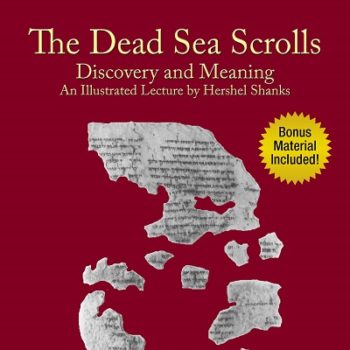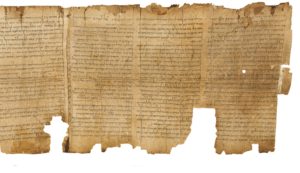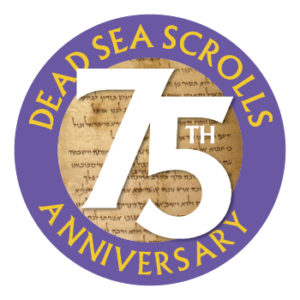Virtual exhibits open up the world of the Bible
To celebrate the 75th anniversary of the discovery of the Dead Sea Scrolls, Bible History Daily is proud to highlight two remarkable digital resources from the Israel Museum in Jerusalem, “Visualizing Isaiah” and the “Digital Dead Sea Scrolls”. Providing high-resolution images and in-depth commentary, these virtual exhibits connect an online audience to the biblical world in whole new ways.


The Digital Dead Sea Scrolls


The Israel Museum’s “The Digital Dead Sea Scrolls” allows users to virtually explore numerous Dead Sea Scrolls through an immersive online experience. The exhibit provides access to searchable, high-resolution images of the scrolls, as well as short introductory videos and background information on the texts and their history. The Dead Sea Scrolls, which include some of the earliest biblical manuscripts ever discovered, offer critical insights into early Jewish religion, culture, and society during the late Second Temple period, a remarkable time that witnessed the emergence of both rabbinic Judaism and early Christianity.
Five complete scrolls from the Israel Museum have been digitized for the project and are now accessible online, including the Great Isaiah Scroll, the War Scroll, the Temple Scroll, Community Rule Scroll, and the Commentary on Habakkuk. Using this online resource, you can now study these biblical artifacts like never before with ultra-high-resolution photography and line-by-line English translations.
Click here to explore the Digital Dead Sea Scrolls >>
Visualizing Isaiah


Fresco of the prophet Isaiah in a hermitage near Studenica in Serbia, c. 1618. Gmihail at Serbian Wikipedia, CC BY-SA 3.0 RS, via Wikimedia Commons
Similarly, the Israel Museum’s “Visualizing Isaiah” online exhibit invites you on a journey through a rich selection of objects from the museum’s collections that portray the life and times of the prophet Isaiah. The Israel Museum holds the world’s most important collection of artifacts from the late Iron Age (eighth–seventh centuries B.C.E.), the period reflected in Isaiah’s life and prophecies. In addition, the museum also houses many of the Dead Sea Scrolls, including the extraordinary Great Isaiah Scroll that preserves all 66 chapters of the Book of Isaiah, the only biblical book discovered in its entirety at Qumran. These artifacts shed light on the material culture of Isaiah’s time and provide a backdrop to many of his prophetic writings. Through “Visualizing Isaiah,” you can explore the museum’s rich selection of objects that portray the era of the prophet Isaiah.
Isaiah lived in Jerusalem, the capital of the Kingdom of Judah, between the late eighth and early seventh centuries B.C.E., under the rule of Kings Uzziah, Jotham, Ahaz, and Hezekiah. During these turbulent times, the Assyrian empire dominated the ancient Near East. In 721 B.C.E., when Isaiah was offering his prophecies, the Northern Kingdom of Israel was destroyed by Assyrian king Sargon; 20 years later, the Southern Kingdom of Judah was ravaged by Sargon’s son, Sennacherib. Isaiah’s personality and prophecies, as described in the biblical texts, have made the Book of Isaiah a cornerstone of both Judaism and Christianity.
Click here to explore Visualizing Isaiah >>
Read more in Bible History Daily:
All-Access members, read more in the BAS Library:
Dead Sea Scrolls: Who Lived at Qumran?
Not a BAS Library or All-Access Member yet? Join today.



